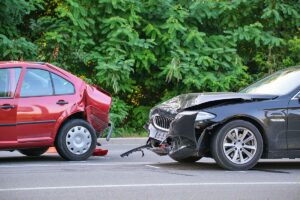According to the latest statistics by the Pennsylvania Department of Transportation, approximately 183 people were injured in a traffic collision each day in 2024. This eye-opening statistic shows an excellent chance you will be involved in a car crash in Pennsylvania sometime in the future.
But to determine your actual chances of being injured, our Pennsylvania car accident lawyers have to examine the statistics more closely.
Daily Pennsylvania Car Accident Injury Numbers
According to PennDOT, car accident injuries occur at alarming rates. In 2024, approximately three people lost their lives in traffic fatalities every day in Pennsylvania. This equals about eight car accident injuries every hour and one fatality every 8 hours across Pennsylvania.
Pennsylvania has an average of 303 car accidents daily, which is about 13 crashes every hour.
Who Has the Highest Car Accident Injury Risk in Pennsylvania?
 Your age significantly affects your Pennsylvania car accident injury risk. Drivers aged 21-25 face the highest risk, with 21,416 crashes in this age group. Young Pennsylvania drivers between 16 and 25 face the greatest car accident injury risk, while drivers over 65 also see increased accident rates.
Your age significantly affects your Pennsylvania car accident injury risk. Drivers aged 21-25 face the highest risk, with 21,416 crashes in this age group. Young Pennsylvania drivers between 16 and 25 face the greatest car accident injury risk, while drivers over 65 also see increased accident rates.
Male drivers in Pennsylvania are more likely to be in car accidents than female drivers across all age groups, which directly affects injury rates.
Where Pennsylvania Car Accident Injuries Happen Most
Location matters for Pennsylvania car accident injury risk. State highways have the highest number of crashes, fatalities, and injuries in Pennsylvania, while interstates are generally safer despite heavy traffic.
Philadelphia, Allegheny, and Bucks counties have the highest number of car accident injuries due to their higher traffic volume.
Types of Car Accident Injuries in Pennsylvania
When Pennsylvania car accidents result in injuries, they range from minor to life-changing. Of the total car accident injuries in Pennsylvania, 3,991 were reportedly serious, 27,590 were suspected to be minor, and 20,699 were possible injuries.
The most common Pennsylvania car accident injuries include:
- Whiplash from rear-end accidents
- Cuts and bruises
- Broken bones
- Spinal cord damage
- Internal injuries
- Traumatic brain injuries
What Increases Your Pennsylvania Car Accident Injury Risk?
Several factors make car accident injuries more likely in Pennsylvania accidents. Speed is the most significant factor – speeding is the leading cause of Pennsylvania car accidents, contributing to 23,427 incidents. Improper turning is the second most common cause of Pennsylvania car accidents, with 13,313 crashes.
Not wearing a seatbelt dramatically increases your Pennsylvania car accident injury. Urban Pennsylvania counties like Philadelphia reported the lowest seat belt usage rates in crashes, with just 36.9% of drivers buckling up.
Reducing Your Pennsylvania Car Accident Injury Risk
You have control over your Pennsylvania car accident injury risk. Wearing your seatbelt, avoiding distractions, following speed limits, and never driving under the influence can significantly reduce your chances of Pennsylvania car accident injuries.
Being extra careful on Fridays and during bad weather also helps, since these are when most Pennsylvania car accidents happen.
Pennsylvania Car Accident Injury Laws and Your Rights
Despite your best efforts, car accident injuries can still happen in Pennsylvania. Pennsylvania law allows injured people to seek compensation for medical bills, lost wages, and pain and suffering from car accident injuries.
The key after a Pennsylvania car accident injury is getting help quickly. Insurance companies often try to minimize payouts for Pennsylvania car accident injuries, and evidence from accident scenes can disappear fast.
Having an experienced Pennsylvania car accident attorney on your side can make a huge difference in your recovery from car accident injuries. A qualified Pennsylvania car accident lawyer understands the state’s specific laws and can protect your rights.
Contact a Pennsylvania Car Accident Attorney Today
While your chances of being injured in a car accident in Pennsylvania are relatively low, the consequences can be serious when Pennsylvania car accident injuries do happen. Defensive driving is the best protection against Pennsylvania car accident injuries, but if you do get hurt, know that help is available.
Remember, these Pennsylvania car accident injury statistics represent real people dealing with real injuries. If you become one of them, you don’t have to face the aftermath alone. Contact a Pennsylvania car accident lawyer at Munley Law today to schedule a free consultation. There is no fee unless we win your case.









